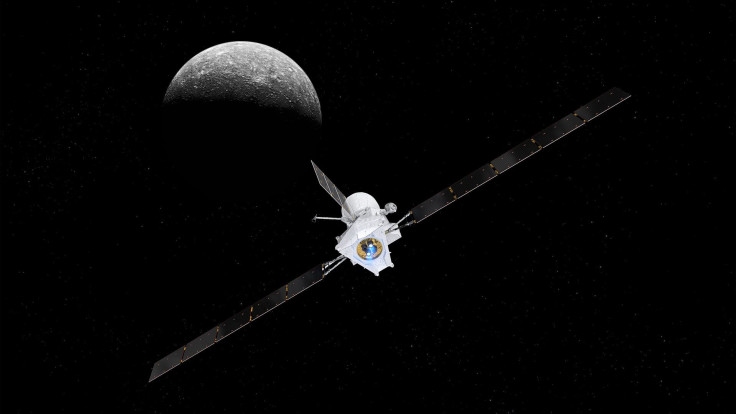LOOK: Pocked Mercury Looks Like Moon In Spacecraft's Stunning Close-Up Images
KEY POINTS
- The ESA shared stunning photos from BepiColombo's latest flyby
- A close-up photo of Mercury shows interesting features like its many craters
- The spacecraft's next flyby of Mercury won't be until September 2024
A spacecraft just made a close fly-by of Mercury and captured some stunning views of the planet. Its pocked surface makes it look rather like our Moon.
When it comes to planetary missions, Mercury may not be the first thing that comes to people's minds of late, considering the incredible missions to other planets in the solar system. One spacecraft that's on its way to study Mercury is the European Space Agency (ESA) and Japan Aerospace Exploration Agency's (JAXA) BepiColombo mission.
Launched in 2018, the spacecraft is "packed" with scientific instruments in the quest to answer some important questions about Mercury. The spacecraft made the third of its six planned gravity-assist flybys of the planet Monday as part of its preparations to enter the Mercury orbit in 2025. It went "very smoothly," said BepiColombo Spacecraft Operations Manager Ignacio Clerigo.
BepiColombo came as close as 236 kilometers (142.9 miles) above the planet's surface at its closest approach, according to the ESA. Its monitoring camera 3 (M-CAM) snapped some stunning images during the flyby.
The photos provide a glimpse of the planet as BepiColombo made its close approach, with some images being closer than others.
One particular photo, which was taken just 15 minutes after the close approach, even shows the planet's surface in incredible detail, with its deep craters and pock marks reminiscent of the craters of our own pocked Moon.
"Mercury's heavily cratered surface records a 4.6 billion year history of asteroid and comet bombardment, which together with unique tectonic and volcanic curiosities will help scientists unlock the secrets of the planet's place in Solar System evolution," said planetary scientist Jack Wright, a member of the BepiColombo MCAM imaging team.
Rising out of the nightside this shadowy view taken about 15 mins after close approach accentuates the heights of snaking tectonic scarps and the depths of craters
— BepiColombo (@BepiColombo) June 20, 2023
🔗https://t.co/lgC1m0oQuW pic.twitter.com/zIobTfxe0N
The ESA also shared an image labeled with the names of some of the craters. This includes a newly named 218-km (135 mile) wide crater Manley, which got its name from Jamaican artist Edna Manley.
Also visible in the images are other interesting geological features, like the 600-km (372.8 mile) escarpment (a long cliff), called Beagle Rupes, that can be seen cutting through the crater Sveinsdóttir.
A beautiful wide view of Mercury's varied terrain, with newly named Manley crater in honour of artist Edna Manley close to centre
— BepiColombo (@BepiColombo) June 20, 2023
🔗https://t.co/iMNWrSCeVS pic.twitter.com/CIhOHPMQKJ
"This is an incredible region for studying Mercury's tectonic history," Valentina Galluzzi of Italy's National Institute for Astrophysics (INAF) said. "The complex interplay between these escarpments shows us that as the planet cooled and contracted it caused the surface crust to slip and slide, creating a variety of curious features that we will follow up in more detail once in orbit."
The BepiColombo also captured an image as it moved further away from Mercury. Interestingly, it looked quite like it was giving the planet a farewell hug between its antenna and body.
Finally, the spacecraft gave a 'farewell hug' to #Mercury before slewing away and continuing on its journey 🤗
— BepiColombo (@BepiColombo) June 20, 2023
🔗https://t.co/5xqSkmWwOR pic.twitter.com/vIAqJCrtlu
BepiColombo's next Mercury flyby is still over a year away in September 2024. With these images, it's quite clear that the spacecraft is ready for its mission even as it's still just on the way to entering the planet's orbit.
"The snapshots seen during this flyby, MCAM's best yet, set the stage for an exciting mission ahead for BepiColombo," said Wright. "With the full complement of science instruments we will explore all aspects of mysterious Mercury from its core to surface processes, magnetic field and exosphere, to better understand the origin and evolution of a planet close to its parent star."

© Copyright IBTimes 2025. All rights reserved.






















